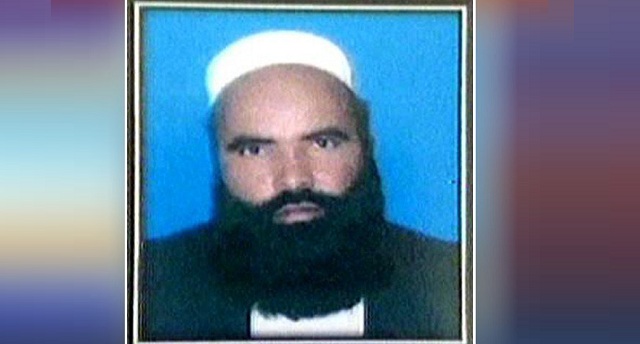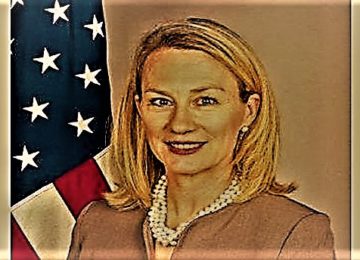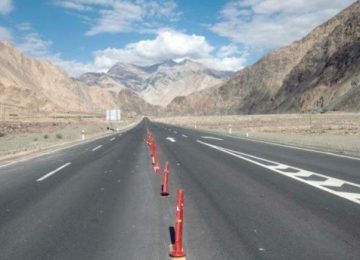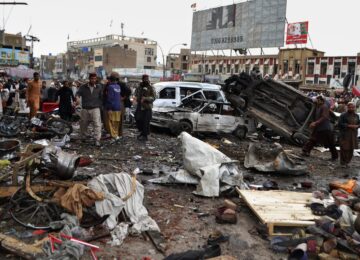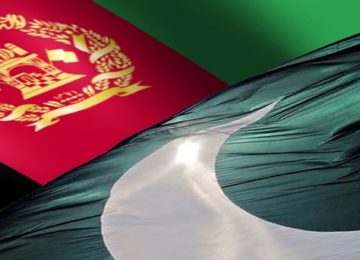There is a long list of senior Pakistani militant leaders who have been killed in Afghanistan, almost all by the U.S. drones or ground operations by the American forces as well as infighting. However, the most important issue is that most of the Pakistani militants now have bases in Afghanistan’s border regions.
Afghan officials say a Pakistani Taliban leader, Jan Wali, also known as Ahmad Sheena, was killed in Shaltan district of eastern Kunar province on Dec. 27. Online Khaama press quoted the military saying that Sheena was killed as a number of insurgents were busy planting roadside bombs and one of them went off prematurely, leaving the senior Taliban leader dead. Sheena is added to the list of Pakistani militants, who have been killed in Afghanistan. This also strengthens claims by Pakistani officials that the militants, who have escaped military operations in the tribal regions and Swat valley, now have sanctuaries in Afghanistan.
Afghan leaders have similar claims and cited the killing of the Afghan Taliban chief Mullah Akhtar Mansour in a U.S. drone strike in Balochistan in May 2016. Mansour, who held Pakistani identity card on the name of Wali Muhammad, came under attack after he entered Pakistan from Iran. Pakistan and Afghanistan in a tit-for-tat action exchanged lists of wanted militants in February this year after a series of bomb attacks in Pakistan, including a suicide bombing on a Sufi shrine in Sindh province, which killed nearly 100 people. TTP and splinter faction Jamaat-ul-Ahrar (JuA) had claimed responsibility for the attacks. The militants’ presence is one of the major irritants in bilateral relations and the uneasy neighbours have yet to agree on cooperation on how to deal with the situation.
There is a long list of senior Pakistani militant leaders who have been killed in Afghanistan, almost all by the U.S. drones or ground operations by the American forces as well as infighting. However, the most important issue is that most of the Pakistani militants now have bases in Afghanistan’s border regions. As reported on Dec. 5, 2017, the al-Qaeda regional chief Omar Khitab alias Omar Mansoor, a Pakistani national, was killed in operation by the U.S. forces in parts of Afghanistan.
Also in December, 2017, senior commander of Jamaat ul Ahrar (JuA) Abdul Rauf, known as commander Abbasi Momand, cousin of Omar Khalid Khorasani, the JuA chief, was killed over differences in the ranks of the dreaded group; a JuA source told the writer and also shared his photograph of his body. Momand had differences with Wali, he said. On Nov. 20 Ahrar sources said Zahid Swati, a JuA commander was killed in the U.S. and Afghan forces’ operation in Kunar, bordering Pakistan. He was the brother of Bin Yameen, a top Taliban commander in Swat and was known as ‘Butcher of Swat.’ He was the 4th brother of Bin Yameen killed in military operations. Bin Yameen was killed in a U.S. drone strike in Khyber agency in December 2010 when Swat and Malakand Taliban had moved to Tirah Valley in Khyber Agency.
In October 2017, TTP commander Maqbool Dawar and his brother Murad Ali were killed in Khost according to tribal journalists, who regularly report on the activities of the Pakistani militants. Mir Salam, a Daesh commander from Orakzai agency was killed in clash with TTP in Nangarhar in early October. His photograph was also posted online. On Sep 30, 2017 Ahrar confirmed it lost 7 members in Nangarhar in U.S. and Afghan joint forces operation. The JuA spokesman Asad Mansoor also released to the media photographs of all those killed. The operation was conducted a day before the Pakistani Army Chief General Qamar Bajwa’s visit to Kabul. He had visited Kabul on Oct. 1 and the cross-border attack was one of the issues on agenda.
In late October, 2017, senior JuA leader Mukarram Khan Momand was attacked and injured by supporters of Khalid Khorasani. He later launched splinter group Hizb-ul-Ahrar. His supporters appeared in a video posted online to launch new the splinter group. In March 2017, a U.S. drone killed Qari Mohammad Yasin, also known as Ustad Aslam, accused of involvement in a deadly attack on a bus carrying Sri Lanka’s cricket team in 2009. Several senior Pakistani militants were also killed in Afghanistan in 2016. Umar Mansour, alias Khalifa Mansour, alias Umar Naray, was one of the senior Pakistani Taliban leaders killed in Afghanistan in July 2016. He had also claimed the terrorist attack on Bacha Khan University in Charsadda on 20 January 2016 in a video. Over 20 students and staff members were killed in the attack.
Hafiz Saeed Khan, the first recognized chief of Daesh for the so-called Khorasan province, was killed in U.S. drone strike in 2016. Khan had earlier headed TTP Orakzai. Former Taliban spokesman Azam Tariq, whose real name was Raees Khan, was killed in September 2016 in Paktika province, where most of the Taliban from Waziristan have bases, tribal correspondent say. Several senior Taliban leaders, who were based in Afghanistan, surrendered to the authorities this year. Ehsanullah Ehsan, who has served as the spokesman for the TTP and JuA and had claimed responsibility for many attacks in Pakistan, surrendered in April 2017, the army spokesman Maj Gen Asif Ghafoor had disclosed at presser. In a video, Ehsan had alleged that Pakistani militants had links with the Afghan and Indian intelligence.
In Nov, 20 17, Khan Daraz, a commander of Hafiz Gul Bahadar group of the Taliban in North Waziristan surrendered to the authorities, according to officials in the region. Daraz had moved to Afghanistan after the June 2014 major operation. He was member of Gul Bahadar’s Taliban Shura. On Nov. 5, 2017 Maulvi Abdul Khaliq, head of the “Inteqam” Group in North Waziristan surrendered to the forces. He was the head of Madrasa Gulshan-e-Elam and member of Gul Bahadar’s Shura. He had shifted to Afghanistan after the major offensive in 2014.
Senior Afghan officials also confirm the presence of Pakistani militants in Afghanistan. Afghan Chief Executive Dr Abdullah Abdullah said in Washington in November 2017 that Tehreek-i-Taliban Pakistan (TTP) has a foothold in Afghanistan. Also earlier in May 2017, Dr Abdullah had told Pakistani journalists in Kabul that TTP is indeed present in Afghanistan. Other Afghan officials, however, insist the Pakistani militants are hiding in border areas which are out of their control. This argument has not convinced the Pakistani officials who maintain Afghan and foreign forces are responsible for security on the Afghan side of the border.
Attacks from the ungoverned areas also forced Pakistani forces to target positions of the Pakistani militants in the ungoverned areas, such as Nangarhar and Kunar province. Also, at least 8 Pakistani security personnel lost their lives in a series of attacks since September on the border posts in Rajgal Valley in Khyber, Bajaur and Mohmand tribal regions by militants operating from the Afghan side, according to the army. On Dec. 22, 2017, Pakistani army said terrorists from the Afghan side killed 3 security personnel from Frontiers Corps who were busy in construction of new border post in Mohmand Agency. The TTP Chief Maulavi Fazalullah appeared in a photograph with three militants who attacked the Agricultural training institute in Peshawar on Dec. 1, 2017, which killed nine people and injured 30 others.
The author Tahir Khan is a senior journalist and a member of CRSS’ Pak-Afghan Track 1.5/II Initiative, Beyond Boundaries Phase III.
© Center for Research and Security Studies (CRSS) and Afghan Studies Center (ASC), Islamabad.



